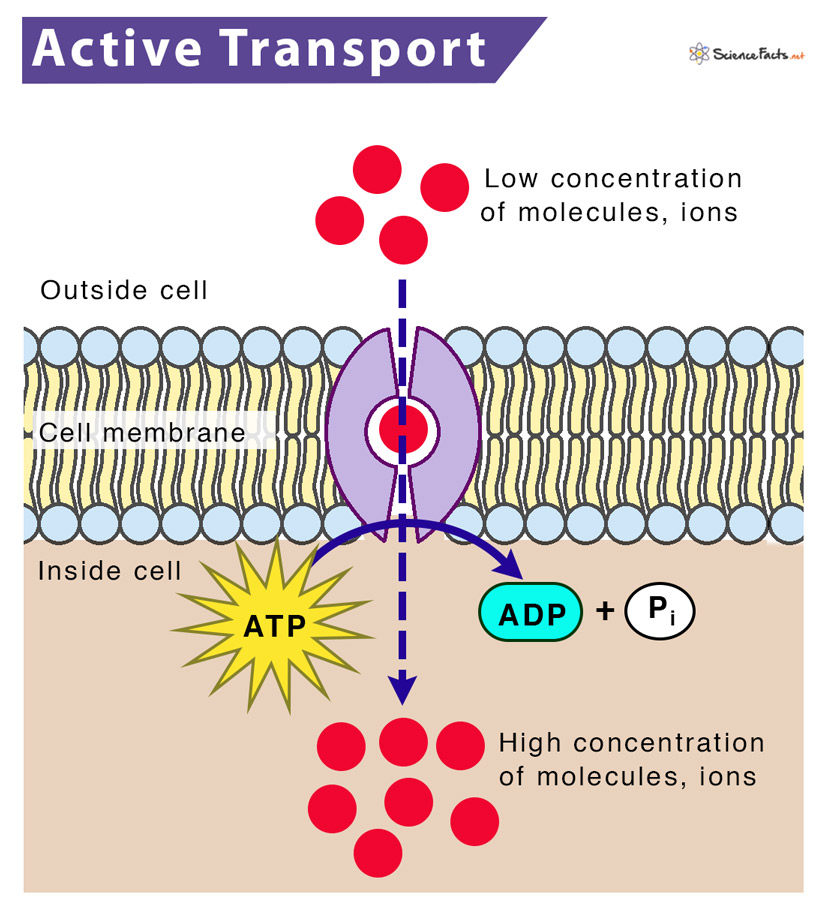Characteristics of Active Transport
Types of Active Transport with Examples
Functions of Active Transport in Cells
What it Transports: Charged ions such as Na+, K+, Mg2+, and Ca2+. Example: Sodium-potassium pump, which helps to move potassium into the cell and carry sodium out.
2) Secondary Active Transport
Also called coupled transport or cotransport, it involves the movement of substances across the cell membrane utilizing energy in other forms than ATP. This energy comes from the electrochemical gradient created by pumping ions out of the cell, which powers the movement of another ion or molecule in the same direction (symport) or opposite direction (antiport) of the membrane. What it Transports: Na+, K+, adenosine triphosphate (ATP), adenosine diphosphate (ADP), and inorganic phosphate (Pi). Example: Cotransporting glucose and sodium in the small intestine using sodium-glucose transporter.
Essential for the absorption of water and minerals from the soil by the root hair cells
In Animals
Necessary for the secretion of metabolic products such as ions, digestive enzymes, and hormones, and the elimination of toxic wastes from cells, by a form of active transport, called exocytosisHelps in the absorption of nutrients by cells, engulfing pathogens by white blood cells, and swallowing food by bacteria occurs by a process called endocytosis, another form of active transportHelps in signal transduction that prepares the cell to adapt to its changing environment
